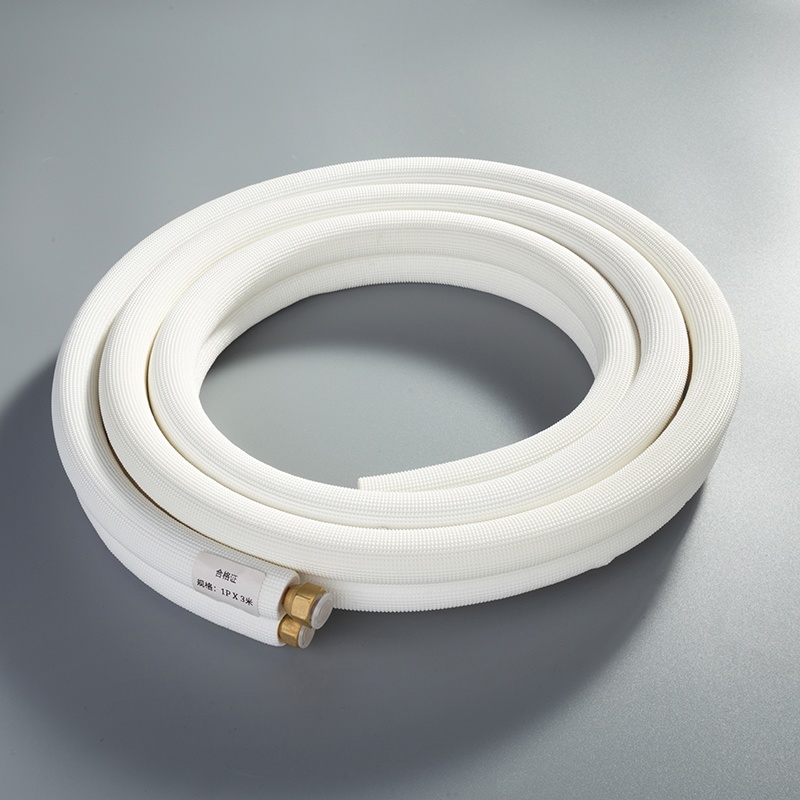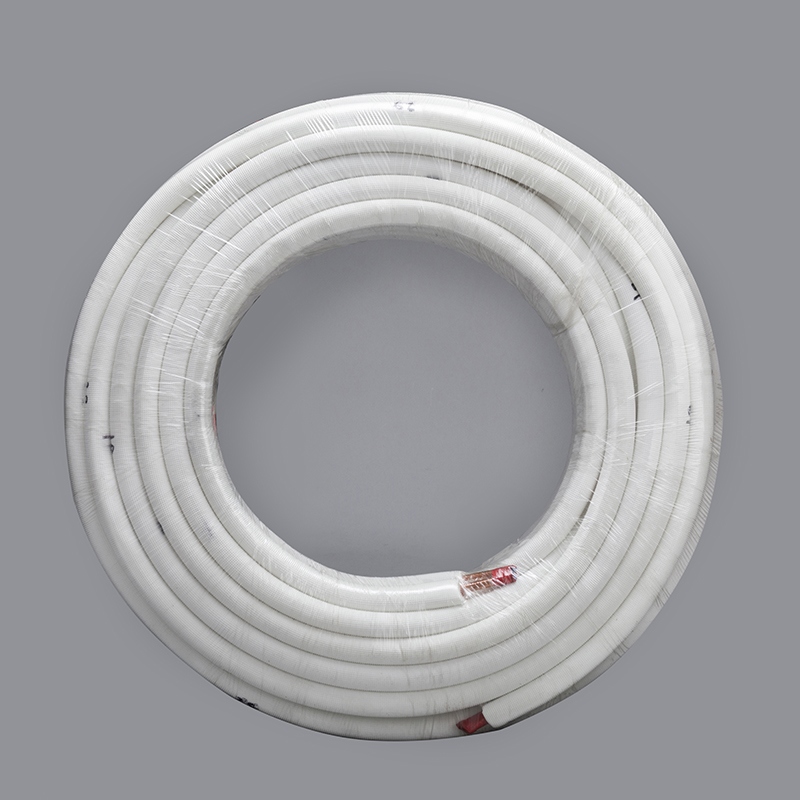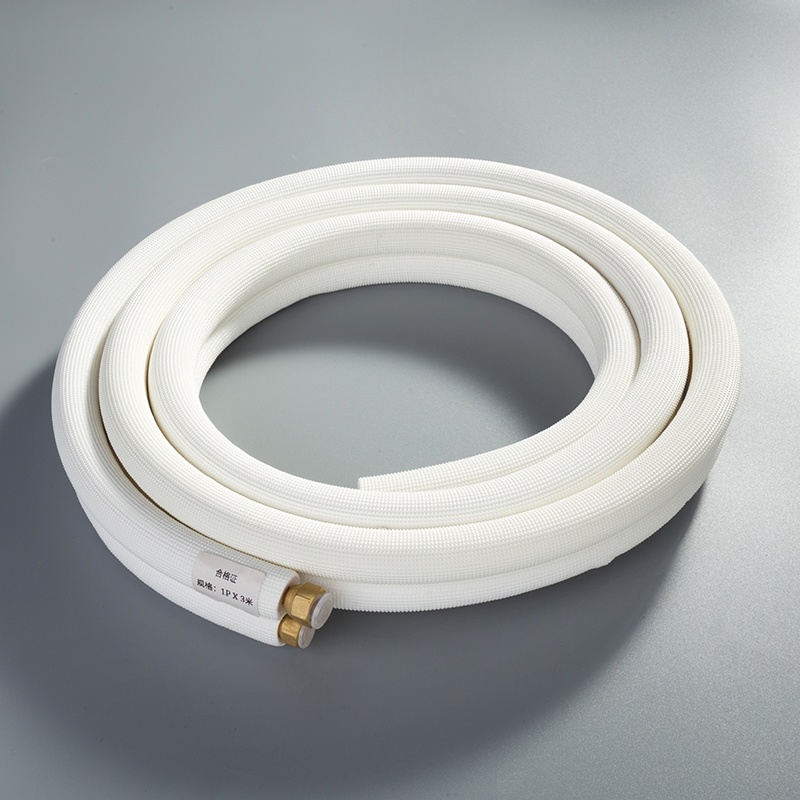5 Easy Steps to Attach Compression Fittings on Bent Copper Pipes

When working on plumbing projects involving bending copper pipes, understanding the significance of compression fittings for copper pipes is crucial. These fittings offer a hassle-free method to connect pipes securely without the need for welding or soldering. In this guide, we will walk you through the compression joint copper pipe process in five simple steps. By using compression fittings for copper pipes, you can achieve a leak-proof connection effortlessly, ensuring a reliable and durable solution for your plumbing needs.
Step 1: Prepare the Pipe

To begin the process of preparing the pipe for attaching compression fittings, it is essential to ensure a clean surface free from dirt and grease. Start by removing any dirt and grease present on the copper pipe using a suitable cleaning agent or emery cloth. This step is crucial as it allows for better adhesion and sealing when connecting the fittings.
Next, inspect the pipe thoroughly to check for any signs of damage or imperfections. It is vital to examine the pipe for dents, cracks, or bends that may affect the fitting's integrity. Additionally, ensure that the pipe has been bent correctly without any kinks or deformities that could hinder the compression joint.
Remember, maintaining your plumbing system is key to its longevity and efficiency. Regular checks and maintenance play a significant role in detecting potential issues early on, especially when using compression fittings on copper pipes. By staying proactive and vigilant, you can prevent leaks and ensure a reliable plumbing setup.
Step 2: Select the Right Fittings
Choose Compatible Fittings
Match pipe size
Ensure the compression fitting matches the size of your copper pipe accurately to guarantee a secure connection. An improper fit could lead to leaks or instability in your plumbing system.
Ensure material compatibility
Check that the compression fitting is compatible with the material of your copper pipe. Different materials may require specific fittings to ensure a tight and reliable joint.
Gather Necessary Tools
Wrenches and tape
Utilize wrenches to tighten the compression fitting securely onto the copper pipe. Additionally, use tape for sealing purposes to prevent any potential leaks in your plumbing setup.
Pipe joint compound
Apply a suitable pipe joint compound to enhance the seal between the compression fitting and copper pipe. This compound ensures a watertight connection, preventing leaks and maintaining the integrity of your plumbing system over time.
Step 3: Attach the Compression Nut and Ring
Slide the Nut
To slide the nut onto the copper pipe, position it correctly over the end of the tubing. Ensure that the nut aligns smoothly with the fitting body to facilitate a seamless connection. A snug fit is essential for creating a secure seal between the compression fitting and the pipe, preventing any potential leaks or loosening over time.
Position correctly
Aligning the nut properly with the tubing ensures a smooth installation process and a tight seal. This correct positioning is crucial for maintaining the integrity of the compression joint and preventing any leakage issues down the line.
Ensure snug fit
Confirm that the nut fits securely around the pipe without any gaps or misalignment. A snug fit guarantees a reliable connection that can withstand pressure and movement, providing long-lasting performance for your plumbing system.
Place the Compression Ring
When placing the compression ring on the tubing, ensure it aligns perfectly with both ends of the fitting. Proper alignment is key to creating an effective seal that prevents water leaks and maintains optimal pressure within your plumbing setup. Avoid over-tightening during this step to prevent damage to the ring or fittings, ensuring a durable and leak-free connection.
Align properly
Aligning the compression ring accurately with the fitting body and tubing is essential for establishing a watertight seal. Proper alignment ensures uniform pressure distribution along the joint, enhancing its reliability and longevity.
Avoid over-tightening
Be cautious not to tighten excessively when securing the compression ring in place. Over-tightening can lead to deformation of components, compromising their effectiveness in sealing connections. By avoiding excessive force, you maintain a balanced and secure attachment between fittings and pipes.
Step 4: Insert the Pipe into the Fitting

Push the Pipe
To ensure a secure connection, push the copper pipe into the fitting until it is fully inserted. This step guarantees that the pipe is properly aligned within the compression fitting, minimizing any potential leaks or disruptions in your plumbing system.
Ensure full insertion
Achieving full insertion of the pipe into the fitting is essential for creating a tight seal and preventing water leaks. By pushing the pipe entirely into the compression fitting, you guarantee a solid connection that can withstand pressure and maintain optimal flow within your plumbing setup.
Check alignment
After inserting the pipe, check alignment to confirm that it sits correctly within the compression fitting. Proper alignment ensures that there are no gaps or misalignments that could compromise the integrity of the joint. By verifying alignment, you guarantee a secure and reliable connection for your plumbing system.
Tighten the Fitting
Once the pipe is inserted, it's crucial to tighten the fitting securely onto the copper tubing to prevent any loosening over time. Start by hand-tightening to establish initial contact before using a wrench for additional tightening.
Hand-tighten first
Begin by hand-tightening the compression fitting onto the pipe to ensure an initial snug fit. This step sets a foundation for further tightening and helps create a strong seal between the components.
Use wrench for final turn
For the final adjustment, utilize a wrench to give the fitting an additional turn. This extra tightening ensures that the connection is secure and leak-proof, providing long-lasting performance for your plumbing system.
Step 5: Secure and Test the Connection
Anchor the Pipe
Use supports
When securing the pipe with supports, ensure they are sturdy and properly aligned to provide stability. The use of reliable supports helps maintain the position of the pipe, preventing unnecessary movement or strain on the compression fittings.
Ensure stability
Stability is crucial for the overall integrity of your plumbing system. By anchoring the pipe securely, you minimize the risk of leaks or disruptions in water flow. Properly supported pipes also reduce stress on the compression fittings, ensuring a durable and long-lasting connection.
Test for Leaks
Apply water pressure
After securing the connection, it's essential to apply water pressure to test its reliability. Increasing water pressure allows you to detect any potential leaks or weak points in the joint. This step ensures that your plumbing system can withstand normal operating conditions without issues.
Check for drips
During testing, carefully check for drips along the connection points. Even a small drip can indicate a leak that needs attention. By inspecting thoroughly and addressing any drips promptly, you guarantee a watertight seal and optimal performance from your compression fittings.
To ensure your plumbing system functions optimally and endures for years, it is vital to recap the steps involved in attaching compression fittings on bent copper pipes. Proper installation is key to preventing leaks and maintaining a reliable connection. Emphasize the significance of professional installations for safety, reliability, and compliance with regulations. Regular maintenance checks are essential to detect any issues early on and ensure the longevity of your plumbing setup. Remember, investing in high-quality fittings guarantees easier installations and long-term reliability.
See Also
Top 5 Tips for Proper 1/4 Copper Pipe Fittings
Key Steps for Handling Unusual 1/2' Copper Pipes
Simple Guide to Rapidly Repairing Copper Pipe Leaks


